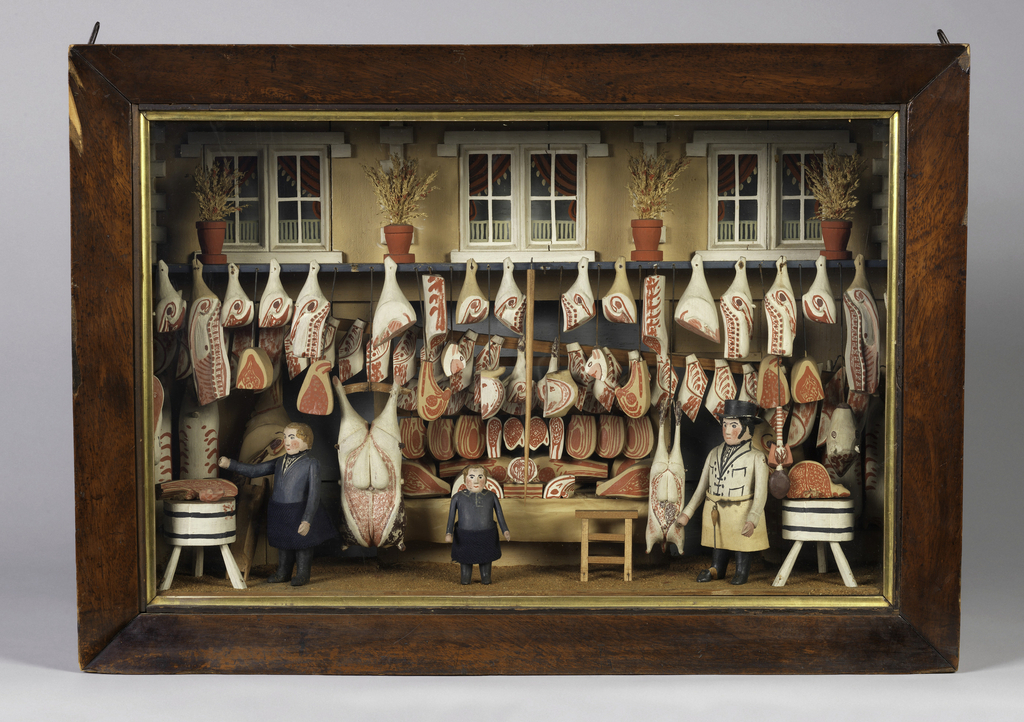How can you draw customers inside your shop, when exposing wares in a window is not an option? This framed wooden butcher’s shop might be an answer. Although it is unclear to what uses this framed life-like model of a butcher’s shop might have been put, the fact that it is framed and behind glass, where it cannot be manipulated, suggests that it was not intended as a toy but, rather, as a sign or display of trade. Indeed, we can imagine the numerous joints of meat hanging on tiny hooks (we count 80!) serving as an advertisement for the types of cuts of meat available in a British butcher’s shop in the second half of the 19th century. A very similar model butcher’s shop is found in the collection of the Victoria and Albert Museum, such that it is likely that these framed models were displayed in shops as a matter of custom. Today, the model gives us a glimpse into market life in Victorian England: the master butcher, with his top hat, stands ready to welcome his customers, while two young apprentices, or journeymen, cut and store the meat, sweep the saw-dust floor, and learn the trade so that they too, one day, can wear the top hat.
Catherine Powell is a graduate student in the History of Design and Curatorial Studies program at the Cooper Hewitt, and is a Fellow in the Product Design and Decorative Arts Department.
